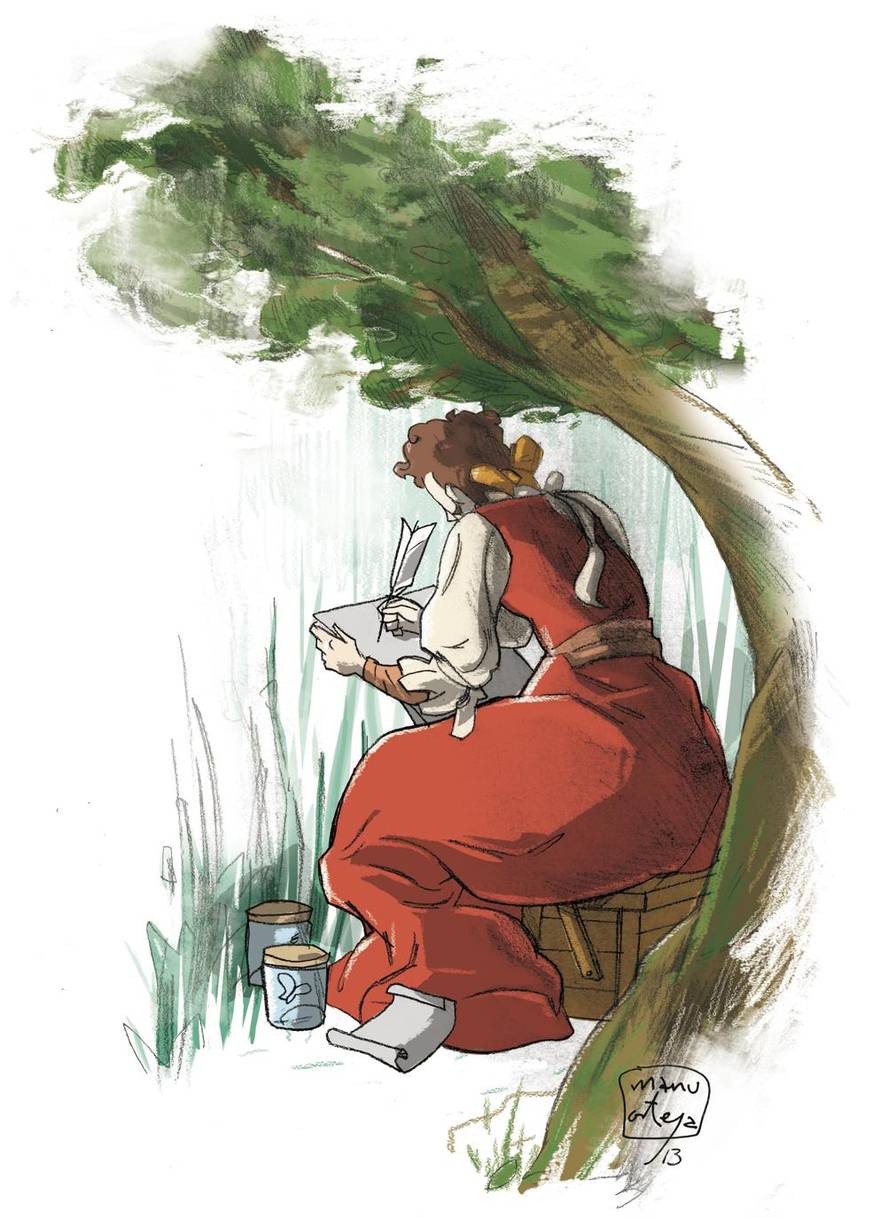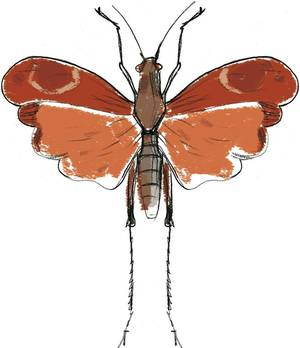Maria Sibylla in Meria, fascinated by the bugs
In 1699, at 52, Maria Sibylla took the boat in Meria. It cost him to raise funds to pay for the trip; he had to sell more than 200 pictures, but in the end he could fulfill that dream. He left the will written just in case and, together with the youngest daughter, he went to Suriname. Merian's dream was to closely observe the insects of that tropical region, study them and draw them.
He remembered how he was fascinated by insects. He would be thirteen years old. "I started with mushrooms, in Frankfurt, in my hometown - I would write differently - and I realized that the other caterpillars also gave cuttings and butterflies. I started collecting all the herbs I could to see how they were transformed."
By then he was a good draftsman in Meria. His second father, the first deceased at age 3, was a painter and he taught him to draw, and soon realized that his daughter had a special gift. At first he drew mostly flowers and, from time to time, added some insect next to the flowers. But little by little the insects took care of the flowers. He was fascinated by the butterflies and herbs of Meria. I wanted to know their way of life: how they were born, what they ate, how they grew up, how they transformed... He cared for, fed and drew different phases of his life cycle.
Thus, without just realizing it, a rather unknown world began to come to light. In fact, few were those who paid attention to insects that were then considered "beasts of the devil". Metamorphosis was not well known and the belief that they were produced spontaneously from dirty waters and sludge was extended. Merian saw it clear: "All herbs are born from the butterflies eggs that have copulated before".
He said so in his first book he published with insect drawings, in the Der Raupen wunderbare Verwandlung und sonderbare Blumennahrung of 1679, an admirable transformation of caterpillars and curious floral foods. In 1683 he published the second part of the book. In those books no one had imagined insects as before. They were images of living animals, not of dead and preserved animals, as was usual. The male Sits poured sperm and the female drew eggs, caterpillars eating leaves, butterflies or even lizards extending the tongue to the food... These images, together with the texts he wrote next to him, showed that he previously investigated in depth the drawings.
He invented compositions that would later be very imitated: one or two species of insects, one of them fed by the earthquake of the plant. This underlined the relationship between these insects and plants. In fact, Merian saw that many herbs were fed only from one plant: "It is noteworthy that I have often had caterpillars that eat only one flower and that if I did not give it, they would die immediately." He also found some rare example: "When they do not have enough food, these larvae eat each other, their hunger is so much." And he knew the mechanisms of defense of the caterpillars: "These big herbs are wound when touching on the stem, but if they are tightened they turn violently". Or "immediately she gets disturbed, when she feels the smallest, she gets red suddenly and stays on the floor, making her menstruation, until everything is completely calm."
He used to find caterpillars in the gardens, first in Frankfurt and then in Nuremberg when he married there. In fact, he gave drawing classes to the single daughters of wealthy families, which opened the doors to their gardens. Then, in 1685, when she was 38 years old, she left her husband and with her mother and two daughters, she moved to Holland, a Labourist religious community. There, for the first time, he began to see spectacular insects from another world: missionaries and butterflies from the tropics, etc. They were wonderful.
After five years of life with the labadists, shortly after the death of his mother, he moved with his daughters to Amsterdam. A study was placed to make and sell drawings of flowers, birds and insects. And he continued to discover jewelry from tropical territories: "In the Netherlands I was surprised by the beauty of the animals they brought from the East and West Indies." But no one provided information about these insects. If those wonderful insects had the opportunity to observe them in place and with life... Dream and do. He left for Suriname, the Dutch colony in Meria.
There he spent two years. It was not a comfortable place to live. He did not have a nice relationship with the Europeans of sugar plantations; he often felt he was laughed to be interested in other things than sugar. But the jungle had good gifts for Merian. "I took this beldar home and soon became a wooden chrysalis," he wrote when he returned to Europe in his book Metamorphosis Insectorum Surinamensium (Suriname insect metamorphosis). Two weeks later, at the end of January 1700, this beautiful butterfly came out, covered with brilliant silver, navy blue, green and purple. Indescribable beauty. Imagining this beauty with brushes is probably impossible."
He was also surprised with ants: "In America there are large ants that eat whole trees and can leave the tree like a broom mango in one night." Other ants "if they want to go somewhere and there is no way, they build bridges; on one side the first one bites or makes a piece of wood, the second places it behind the first and clings to it, the third takes the second, etc. This way they reach the other side and then pass thousands of ants through the bridge." And he described the furry spiders that fed on ants. "When they do not find enough ant, they take from the small nests birds that absorb their blood. From time to time they change the skin like caterpillars, but I have never seen flying."
It was the first time that this type of insect behavior was documented. In Europe many did not believe. There were even those who said that ants could not make bridges. The inventions of a woman...








